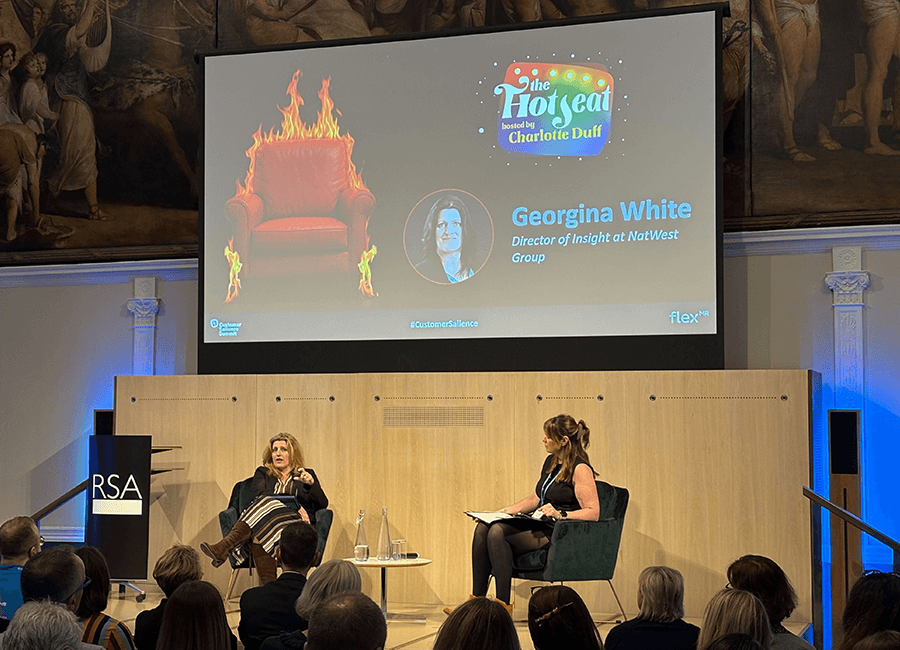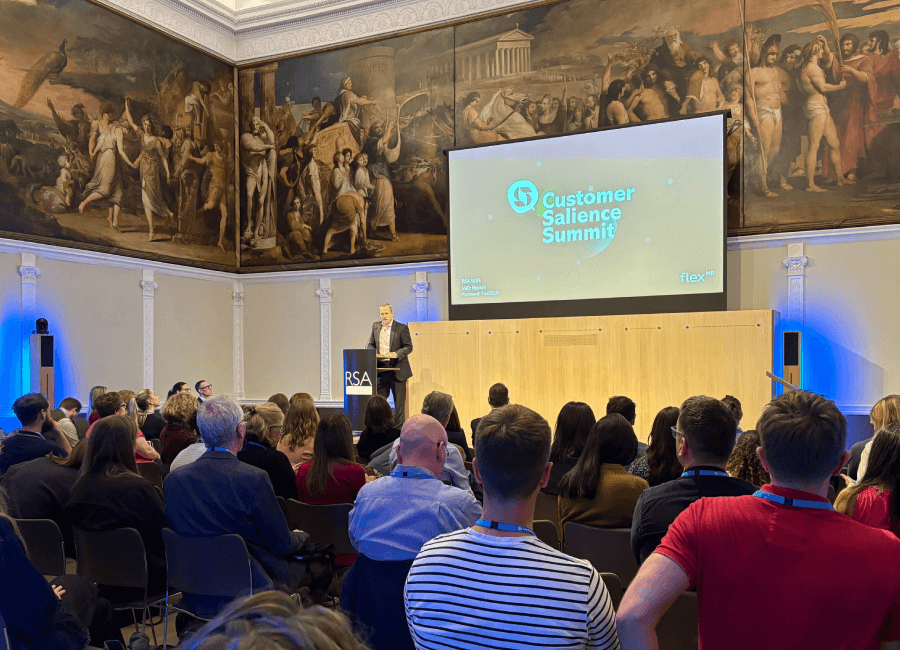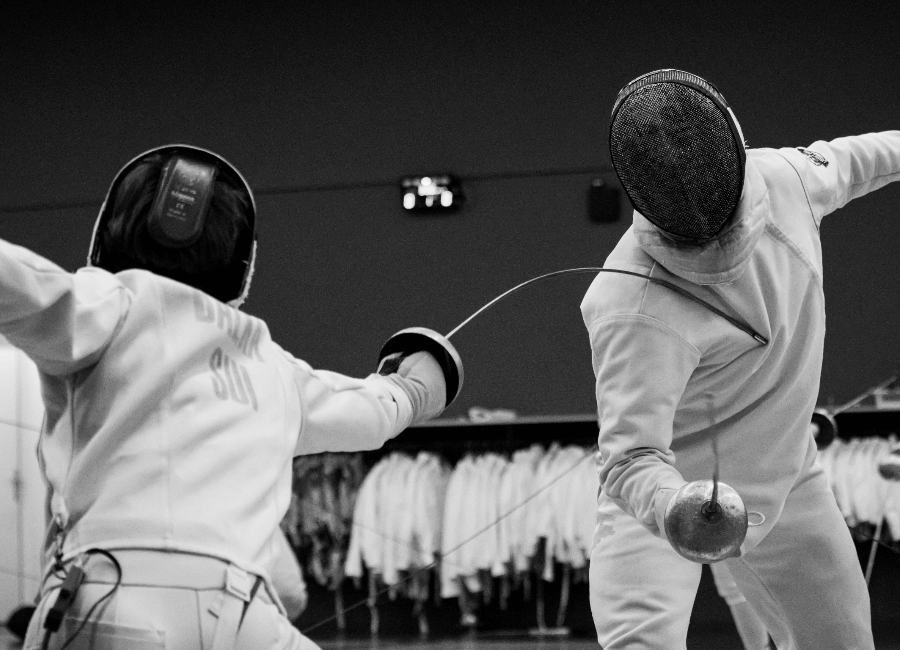Stakeholder engagement is a big topic in insights at this moment in time. We are dealing with a myriad of stakeholders and clients who do not understand consumers in the way they need to, and who may not understand the value of market research in getting them across that line so they can start to understand what customers need.
But the insights industry is here nonetheless, pushing through and working to connect stakeholders and customers closer than ever before. On 9th June 2021, FlexMR’s Research Director, Maria Twigge, hosted a roundtable event with seven prominent insight professionals from a variety of interesting industries:
- Rachel Chalke, Customer Insight Manager at Confused.com
- Aga Wilson, Insight Manager at Paragon Bank
- Shehnaz Hansraj, Head of Research and Insight at Viking Cruises
-
Debbie Howden, Senior Customer Insight Manager at Cambridge English
- Anna Apostolopoulos, Market Intelligence, Global Education at Pearson
- Gary Stow, Innovation Thought Leader in Sensory Consumer Sciences at Reckitt
- Alexandra Meissner, Consumer Insights Specialist at Groupe Dynamite
- Emma Easton, Senior Research and Insights Manager at Ofgem
- Paul Hudson, Founder and CEO of FlexMR
These great representatives from diverse brands and industries all have similar challenges despite the industry discrepancy, which made this roundtable an incredibly interesting and lively discussion. What succeeded the introduction was a wide cross-section of views from a myriad of experiences and situational challenges.
A big thanks to everyone who got involved, shared their viewpoint and problem-solved with the group on this topic. I think everyone came away with a lot to think about and new strategies to implement in the future.
| Tweet This | |
| What does stakeholder engagement mean to you? Everyone has different experiences and strategies, which made for a very lively discussion at FlexMR's roundtable event! |
What Does Stakeholder Engagement Mean to You?
A relatively simple premise, stakeholder engagement is the process of capturing the attention and intrigue of stakeholders in insights, whether that’s through their involvement in the research process or simply in the resulting insights themselves.
But each of our participants has had a variety of different experiences with stakeholder engagement, and so their view of the process will skew towards that. As the host, Maria started off the discussion by sharing her view first, saying that she sees stakeholder engagement come in three stages: stakeholders understanding the value of insights, stakeholders applying the insights, and then stakeholders coming back to share the impact those insights have had on their decisions and the wider business.
Where are the respondents on the path of stakeholder engagement?
Shehnaz then explained she says it’s always beneficial to think like a marketer, what is their personal benefit? Stakeholders have no interest in how insight teams are doing it or why they’re doing it, it’s all about why should the stakeholders bother or care or listen? This is a helpful way to think about insight delivery and stakeholder engagement, as it could lead the way to less statistic reporting and more stakeholder connection with research. Shehnaz gave the example if we tell stakeholders “They can save half a million or half a billion, or they can get that revenue they’ve spent back, then all of a sudden they’re listening”.
Emma chimed in with her agreement, adding that she always finds the mitigation of risk is a big encouragement for stakeholder engagement. It gets their attention. A reminder that you need to understand your audience and speak to consumers because they’re taking big risks in their decision-making if they don’t make an informed decision.
Insights allow us to really get under the skin of both the customer and stakeholders to see what’s bothering them, and unpack it to find out what you don’t know. At the end of the day, stakeholders don’t like ambiguity, but a lot of research is ambiguous. We can’t guarantee results, but we can guarantee that we can help them make informed decisions.
How to Engage Stakeholders – Tactics and Tricks
A fantastic outcome of this event was the variety of tactics our insight professional participants were currently implementing to try and keep insights at the forefront of conversations.
One of the big goals for most insight teams is to keep insights at the forefront of conversations. As Aga said, we need to focus on “not simply being a supplier of insights, but instead work towards being a partner to stakeholders so we’re at the table when conversations are had rather than just delivering insights to the table.”
This is a topic that spurred a number of agreements, and recognition that getting a seat at the table or simply being present when issues come up in conversations is a challenge in and of itself, doubly so now that we have virtual work environments to contend with and water cooler chats where teams intermingle are less accessible.
Whether we’re heading back into the office or continuing online, insight teams need to find a way to show up to conversations all across the organisation where issues arise and say ‘hey we can help with that!’ or ‘have you thought about asking the consumers what they want, or speaking to that team to find out more about how to resolve it?’ During lockdown, our participants found ways to help distribute insights and engage members of the organisation in a horizontal manner rather than the traditional top-down approach.
Gary Stow from Reckitt offered their current tactics into the conversation saying that they “use [Microsoft] Teams to compensate for the virtual lack of casual conversations.” When the need investment or require stakeholders to pay attention to the insights, then he uses Teams to facilitate larger conversations.
| Tweet This | |
| The attendees explored in-depth the challenges they experience daily with stakeholder engagement, and which tactics are implemented to encourage insights engagement and activation. |
Both Gary and Alexandra mentioned a version of ‘lunch and learn’ or ‘snack and learn’ sessions, where an open invitation to all of the organisation is issued and they create a virtual gathering on Teams create conversation, talk about insights and develop a collaborative culture by asking the wider organisation questions about how they might use the insights to the best of their ability, or which ones felt particularly relevant at the time.
But also using software like Teams for smaller conversations could help keep insights front of mind even after the larger conversation has taken place. Gary mentioned that “sometimes it’s superficial things, but putting in items to keep the conversation alive is handy (for example, if we find an article that relates to a previous conversation then we’ll bring that up to spark new conversations).” These conversations recreate the water-cooler type conversations that encourage engagement and create natural moments where insight teams can say ‘oh I can help you with that’.
Aga had a similar premise with Insight Immersion days, which are entire days where insight teams set up in a room with presentations and interesting visuals. Anyone from across the organisation can attend and strike up informal conversations with the insight team to learn more about what they do and how they can help, which takes the pressure off the more formal insight presentations and meetings. But Aga also mentioned a curious way of using internal communication software like social media, where they’d post updates and bite-sized insights for other members of the organisation to comment on and engage with online, even collaborating with the PR team to see how to incorporate journalistic techniques in the way they deliver insight.
This maintaining dialogue is key to breaking down the silos that are detrimental to the productivity and image of insight teams. Democratising access to insights through this horizontal approach was a key theme that all of our participants were trying to work towards. A few other ways to communicate insights were discussed, such as using TV screens in offices, or similar functionality in online internal communication hubs, to display videos or infographics communicating the insights, which works to start candid conversations and remind others of the presence of insights.
Alexandra commented that her team communicates insight strategies and updates in regular email newsletters, to allow others a chance to explore what’s currently going on within the insights team schedule, what opportunities are presenting themselves, and what the team will be doing in the future. This all works towards challenging the premise that market research quickly gets forgotten in day-to-day life. Shehnaz explained that her experience is that research is pushed aside, an expendable resource when “firefighting” different challenges and situations (like the pandemic).
Collaboration is a great way to keep research in the forefront of stakeholder minds; Shehnaz likes to get stakeholders involved in the problem-solving processes, as well as adding old and new insights to conversations, and spending some time listening to stakeholder concerns to encourage them to get more involved in the future so they have a chance get closer to the customer.
The last impactful insight that came out of this part of the discussion is that no one trick works perfectly on its own, but also be wary of taking up a lot of ways to insert insights into the conversation. Find the right balance by using a few tactics and figuring out which ones work best together. Gary explained that it works best to play to the culture of the organisation when choosing the right tactics; he identified his culture as an intensely collaborative one with a thirst for knowledge, and implemented his tactics accordingly.
Collaboration vs. Curation, and Insight Delivery
One ever-present argument in insights is: which is better, collaboration or curation when it comes to the extent of stakeholder involvement?
The answer the group came to? It really depends on the stakeholders, the insight team, and the scale and style of the research taking place.
Aga starts off this part of the discussion by saying, quite rightly, that it’s very dependent on “the personality of the stakeholders involved”, which is reflected very well in the conversation that followed. Alexandra and Anna both prefer collaborating with stakeholders during research, and manage to achieve high volumes of collaborative research for different reasons.
Alexandra commented that she is a victim of her own success, she has established herself as a reliable source of quick insights and her stakeholders are keen to get involved as much as possible. With their expertise in their industry and Alexandra’s research capabilities, collaborative research only helps their organisation grow.
Anna also has a very high workload with research in demand, so she has no capacity to do everything that is asked. Anna believes that the stakeholders she deals with “are capable researchers themselves even if they’re not managing the project or process” and as such can be trusted to create surveys and gather the right data that is specific to the subject they’re wanting to learn about, taking the pressure off Anna as she tackles other research projects.
Emma’s preference is also collaboration as she believes it “yields much more thorough business understanding of the issue you’re researching.” However, this isn’t an approach we can take all the time. Emma’s experience of research very much depends on the stakeholder who’s commissioning the research. When directors commission research, Emma explained that she usually has about 20 minutes of discussion about the research objectives and context, and from then it’s a purely curative experience.
This is something that Rachel has experienced as well in Confused.com, that board members typically have questions they want answered but they have no time to get involved themselves, but the lower down the levels she goes, the more involved they want to be in the research process.
While patterns such as this emerge across industries, everyone’s experience is due to different variables, so it’s vital to get to know stakeholders knowledge, experience, and expectations when it comes to research. Maria commented that these answers reflect a shift in the way we work; in response, we need to offer more agility so we can accommodate all stakeholders’ needs where possible, and get early involvement to get as much detail as possible.
From this, we can get a sense that some stakeholders do have a desire to get involved in research, and that yields a lot of positive influences for insight teams, but are there any dangers that we need to be wary of?
Gary mentioned that he likes collaboration in the data gathering stages, but the onus should be on insight teams to curate the insights in the analysis and reporting stages. In his experience, once stakeholders become involved “the [project] becomes their baby, and if we need to tell them that their baby isn’t particularly popular then that might not go down quite as well.” In order for insight teams to do their jobs and provide objective, accurate insights, then stakeholders that are too close and end up detaching from any issues that arise might need to stay out of the curation stage.
Shehnaz agreed with this assessment and added that if she wasn’t curating the insights then the data generated would often be interpreted to soothe the end user’s needs. So maybe the question shouldn’t be whether to implement collaboration over curation, but what balance of both strategies is needed in each research experience?
The final part of this discussion focussed on the holy grail of market research insight delivery: the Insights Inventory. Also known as the Data Warehouse, this concept was accepted optimistically by our participants, a few of whom are on their way to attempting to build an inventory of insights, research experiences, and their outcomes for stakeholders to access and use at any one time. This is a huge undertaking if attempting to record insights from years ago, but Rachel at Confused.com mentioned that they’re starting to build one and simply put everything they research from now on into it so there’s a starting point at least. This democratises access to insights and allows future research to build on what’s already done and fill in any gaps rather than commission the same research time and again.
Moving Forward – Top Tips
With experience in a myriad of different industries and stakeholders, it’s vital that we learn from each other’s experiences to find new strategies, new perspectives, and new tricks to help better engage stakeholders in the future. A few of our participants had some words of wisdom to share:
Maria Twigge
My top tip would be to use the element of surprise. I’m more of a qualitative researcher myself so if I can find something that’s really going to surprise [stakeholders] I will pull that out to get their attention. Or surprise them by saying yes when they’re expecting a no, and get them engaged that way, or using a format that they’ve not seen before in terms of reporting. Like the [Insight as Art] postcards or use a snippet of a respondent singing a song, just something that will really grab their attention.
Rachel Chalke
We love a video clip! My stakeholders love a video clip and it’s so relevant to the new software that FlexMR has launched, they really lap it up! Somebody saying something that’s an actual customer, or even someone that isn’t a customer that we can try to convert, it’s so much more powerful than me standing in the corner chatting.
I don’t put lots of video clips in, but if there’s a point I’m really trying to emphasise then I get the customer to say it for me.
Emma Easton
We implement something we call the ‘so whats and now whats’, so we all know that stakeholders come to us and say #tell us the answer’ and the answer is never ‘yes or no’ because that’s not how people work. But what they’re really looking for is ‘what does this mean’ and ‘what should I do?’ So, if I can give them those answers then that is immensely useful to our stakeholders.
Shehnaz Hansraj
Keep it simple. I think it’s Steve Jobs that does the rule of three, the takeaways, completely simplified and distil it, what are the three things they need to remember, and just keep repeating it throughout whatever you’re talking about so it sticks. And doing a quiz at the end because they think ‘oh god I’ve got to remember this! I’ve got to pay attention!’.
Gary Stow
Take the time upfront to get to know the human who is asking for your support; are they excited by numbers and details or engaged by visual concepts? Do they want you to tell them what to do, or do they want to make their own conclusions? Are they a subject expert or new to the role? And understand not just the research brief objectives, but what else might be going on as challenges for them (who are their stakeholders, what story do they need to tell with the research result?)
Showing you're listening to them as an individual builds their trust and creates a partner relationship rather than a service one, and the more you know about them and where they're coming from, the more informed you are to be able to design the most engaging piece of work; from defining their role in the research, when and how you collaborate with them, and what story you tell/useable artefacts you create as a final product at the end.


















